Lactarius hepaticus Plowr. - Liver Milkcap
Phylum: Basidiomycota - Class: Agaricomycetes - Order: Russulales - Family: Russulaceae
Distribution - Taxonomic History - Etymology - Identification - Culinary Notes - Reference Sources
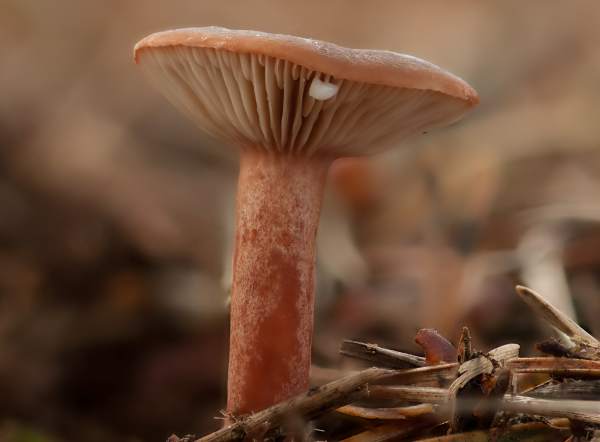
Lactarius hepaticus is found in coniferous woodland, mostly under pine trees (Pinus spp.) but also occasionally with spruce trees (Picea spp.). It has a dull liver-brown cap and a bitter aftertaste.
Distribution
Infrequent but widespread in Britain and Ireland, the Liver Milkcap is also quite common throughout most of northern and central mainland Europe, and this species (or a very similar species sharing the same name) is also recorded in parts of North America.
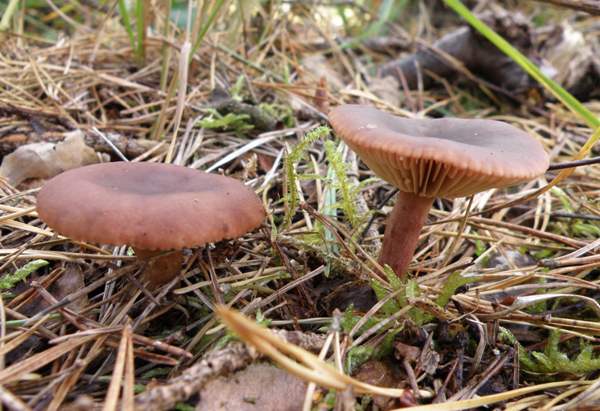
Taxonomic history
The Liver Milkcap was described scientifically in 1905 by British mycologist Dr. Charles Bagge Plowright (1849 - 1910), who gave it the binomial name Lactarius hepaticus by which mycologists still refer to it today.
Etymology
The generic name Lactarius means producing milk (lactating) - a reference to the milky latex that is exuded from the gills of milkcap fungi when they are cut or torn.
The specific epithet hepaticus is a Latin adjective meaning 'resembling a liver - and that refers to the colour of the surface of the cap rather than to its taste!
Identification guide
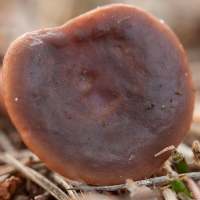 |
Cap2.5 to 5cm in diameter, convex and then depressed, often with a slight umbo, the cap is dull liver brown with a paler margin. The surface of the cap is smooth and finely matt. |
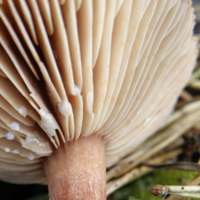 |
GillsVery shortly decurrent and moderately crowded, the gills are pale pinkish buff to pale clay buff. This milkcap releases white latex that slowly turns yellowish on a white handkerchief or tissue; the tasle of the latext is unitially mild but then gradually becomes bitter. |
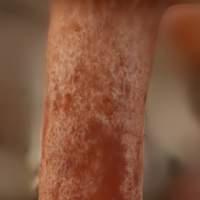 |
StemTypically 0.8 to 1.0cm in diameter and 3.5 to 6cm long, the stem is more or less cylindrical or slightly clavate at the base. The stem surface is smooth and dry with a colour slightly paler than the cap; the stem tends to become hollow and fragile with age. The stem flesh is soft and a pale pinkish buff. |
SporesSubglobose to broadly ellipsoidal, 6.5-9.5 x 5.5-7.5µm; ornamented with ridges up to 1.3um tall and with many cross-connections that form an almost complete reticulum. Spore printPale cream. |
|
Odour/taste |
The milk (latex) has an initially mild taste that gradually becomes bitter; the odour when gills are crushed is oily or similar to that of the Oak Milkcap Lactarius quietus and said to be reminiscent of bugs. |
Habitat & Ecological role |
Mycorrhizal with pine trees, sometimes singly but more often in in small scattered groups. |
Season |
September to November in Britain and Ireland. |
Similar species |
Lactarius musteus is a much rarer and very much paler milkcap; its stem is pitted; italso leaves a pale cream spore print and occurs under pine trees. |
Culinary Notes
The Liver Milkcap is reported by some authorities to be edible when cooked, although other sources list it as inedible because sometimes these mushrooms have a very hot taste. In any case, because this is an uncommon find in most parts of Britain and Ireland it is not much sought as a source of food for free.
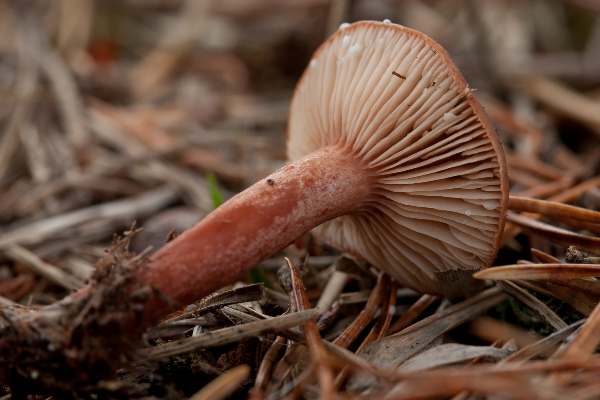
Reference Sources
Pat O'Reilly (2016). Fascinated by Fungi, First Nature Publishing
Jacob Heilmann-Clausen, Annemieke Verbeken, & Jan Vesterholt (1998). The Genus Lactarius (Fungi of Northern Europe—Vol. 2) The Danish Mycological Society.
Funga Nordica, Henning Knudsen and Jan Vesterholt, 2008.
Fungi of Switzerland, volume 6: Russulaceae, Kränzlin, F.
BMS List of English Names for Fungi.
Paul M. Kirk, Paul F. Cannon, David W. Minter and J. A. Stalpers. (2008). Dictionary of the Fungi; CABI.
Taxonomic history and synonym information on these pages is drawn from many sources but in particular from the British Mycological Society's GB Checklist of Fungi.
Fascinated by Fungi. Back by popular demand, Pat O'Reilly's best-selling 450-page hardback book is available now. The latest second edition was republished with a sparkling new cover design in September 2022 by Coch-y-Bonddu Books. Full details and copies are available from the publisher's online bookshop...

